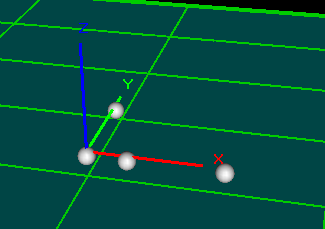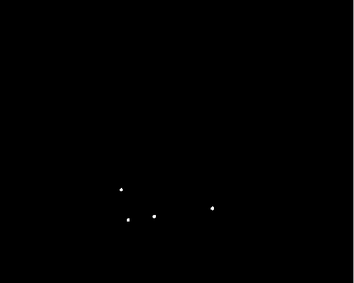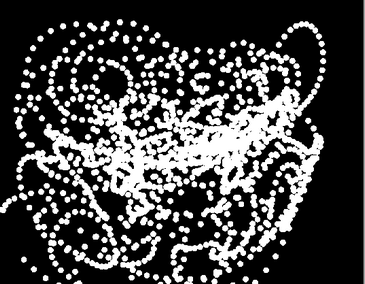The dynamic wand calibration is performed using a L shaped reference frame with 4 markers and a wand with 2 markers. The coordinates of the 4 reference markers are entered into the software as well as the distance between the 2 wand markers.
The L-Frame is placed in the view of the cameras. It is normally placed low in the view such as the floor. This reference frame defines the orientation of the global coordinate system. By default, the long arm defines positive X and short arm positive Y making positive Z going up if placed on the floor. The “corner” marker normally defines the origin of the coordinate system.

The wand is moved around in the volume during the calibration process. It is very important to move the wand around in the entire 3D volume as well as covering up each camera view. If this is not done correctly, you will end up with a poorly calibrated 3D volume. The cameras are also linearized during the calibration process so if the wand movement is not covering up the camera views small errors will be magnified as you reach the edges of the camera views.
The wand must also be moved both vertically and horizontally so that the volume is being scaled properly. Please note that both wand markers must be in the view of the camera in order to be used. If one wand marker is constantly going out of view, you need to use a smaller wand kit.
The wand should normally be moved around for 10-30 seconds so that the 3D volume and camera views can be covered. The calibration needs at least 300 frames of valid wand movements in order to generate a proper calibration.
Camera view with L-Frame on the bottom |
Wand movements covering up the camera view |
Calibration Results
After the calibration, the software displays the result of the calibration.
Merit Value
|
This is the average error of each camera in system units (normally mm). This is usually less than 1 mm. For a volume smaller than 1 m you should expect this to be less than 0.5 mm
|
Wand Length Range
|
This is the difference between min and max measured wand length. This is normally between 35-65% of the size of the markers used on the wand. If this number is smaller than 25% then this indicates that the wand was not moved around enough. If this is larger than 2 times the marker size, then this might indicate a problem with the system.
|

